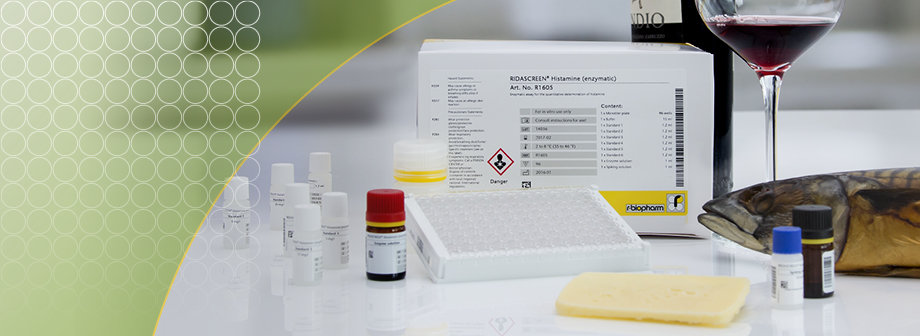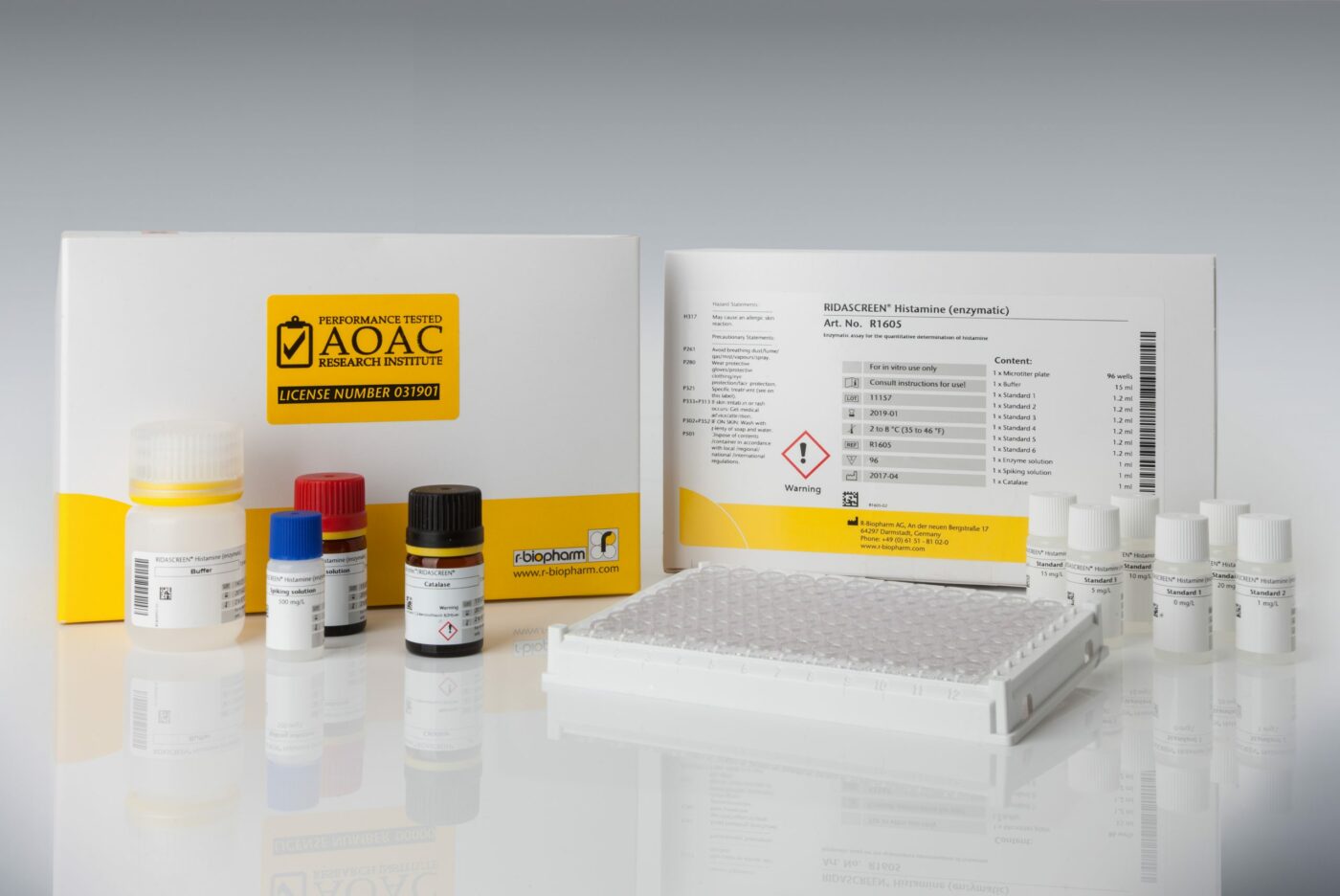
Recent news in Food & Feed Analysis
- Home
- /
- Histamine: An underrated topic...
Histamine: An underrated topic in food analysis?

The 20th Food Allergy Awareness Week will start on Sunday – a good opportunity to draw attention to a fairly unknown food intolerance: histamine intolerance. Here are five questions and answers to help you handle histamine in food production.
1What is histamine intolerance?
Histamine intolerance (HIT) is not a true allergy, but a food intolerance caused by impaired degradation of histamine due to a lack of the enzyme diamine oxidase (DAO). As a result, the histamine level in the body is too high and affected persons suffer from gastrointestinal disorders, headaches, shortness of breath or itching. Histamine intolerance affects about 1 % of the European population, mainly middle-aged women.
2Which foods contain histamine?
Histamine is a biogenic amine which is formed from the amino acid histidine and is naturally present in the human body and in many foods. High concentrations of histamine can be found in foods that are produced through microbial fermentation – for example wine, sparkling wine, cheese, raw sausages, soy sauce, vinegar or pickled vegetables. Moreover, histamine is formed in fish products when stored improperly.
3Which legal regulations are to be observed?
Histamine does not have to be labeled as an allergen, neither in the EU nor in the USA. However, since high histamine levels in fish indicate spoilage, potentially resulting in scombroid fish poisoning, histamine is of interest in hygiene monitoring. EU regulation 2073/2005 requires certain fish and fishery products to be tested for histamine. The limit value is 200 mg/kg (400 mg/kg for anchovies). Fish products exceeding the limit value may not be marketed. Since the beginning of 2017, there were eight recalls of fish products in the EU due to excessive histamine levels. Histamine limit values for wine and cheese are under discussion. Switzerland was the first country to establish a limit value for histamine in wine; however, the limit value has meanwhile been abolished.
4How is histamine detected in food?
The analytical reference method for the detection of histamine in food is high performance liquid chromatography (HPLC). An alternative to this relatively expensive and time-consuming method is an ELISA test. In addition to a traditional enzyme immunoassay (RIDASCREEN® Histamin ELISA), there also is an enzymatic test in microtiter plate format (RIDASCREEN® Histamin enzymatic) which is quick and easy to use. The results are robust and correlate very well with the reference method.
5How can one prevent high histamine levels in food production?
Whether for hygiene monitoring or for allergen management: In order to keep histamine levels to a minimum, it is important to strictly adhere to hygiene standards in food production. This includes, for example, cool storage and quick consumption of fish and meat products. Since histamine is insensitive to heat and frost, histamine levels cannot be reduced neither through cooking, baking nor freezing.
Do you have further questions concerning histamine and food analysis? We will be happy to support you!

